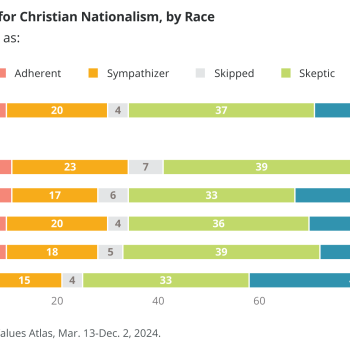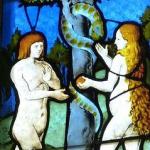The sky puts on the darkening blue coat
held for it by a row of ancient trees;
you watch: and the lands grow distant in your sight,
one journeying to heaven, one that falls;
and leave you, not at home in either one,
not quite so still and dark as the darkened houses,
not calling to eternity with the passion
of what becomes a star each night, and rises;
and leave you (inexpressibly to unravel)
your life, with its immensity and fear,
so that, now bounded, now immeasurable,
it is alternatively stone in you and star. ~ Rainer Maria Rilke, excerpt from "Evening" (translation by Stephen Mitchell)
This summer I went to see Terrence Malick's newest film, The Tree of Life. I actually went a second time, because after the first viewing I couldn't stop thinking about it. And while there were parts of the movie that didn't feel satisfying to me—mostly the ending—I loved that this was essentially an act of cinema divina, of meditating on how the holy is being revealed.
Lectio divina is the ancient art of "sacred reading"—the slow savoring of a scripture text that shimmers until it reveals a new layer of meaning and depth. The Tree of Life opens with a quote from the book of Job where God asks: "Where were you when I laid the foundations of the earth . . . when the morning stars sang together?" (Job 38:4,7) and the rest of the film is a meditation on this question, essentially an act of lectio divina through image, music, and story.
Job, despite his righteousness, loses everything, including his children and wealth. His friends offer him the kind of trite answers we often hear from others in the midst of our own suffering. God never answers his cries, but merely poses a series of rhetorical questions that point to Job's limitations of understanding.
The central story of the film is of loss, a family losing a son and brother to war and the ways its members wrestle with the primal question of where God's presence (or absence) is in the face of such suffering. There are layers of losses and unrealized dreams that ripple across generations. The story isn't a linear experience as we may expect in films, but more of a series of spiral inner explorations. Voices whisper questions and longings throughout, evoking a sense that we are sitting in holy space together, that we are praying in beholding this story.
The quote from Job points to the vastness of God's powers, and indeed the film has a sequence near the opening that is a visual meditation on the "foundations of the earth." Spectacular images are shown that depict the unfolding of the cosmos through time. Here I found myself caught up in both the awe I often feel upon witnessing the glories of creation, confronted with the grandness of it all, and how small my own life feels in comparison. Nature in many ways seems indifferent to our suffering. Sometimes when I go for long walks through the woods to bear the weight of a grief I carry, this indifference is almost a comfort, a sense that there is something much larger than my tiny wedge of sorrow.
The day after I saw this film, I read Rilke's poem "Evening," which is excerpted above. I often pray with poetry in another kind of lectio divina, letting words and phrases rise up and shimmer through my days. As I sat in the silence I held that last line: "now bounded, now immeasurable / it is alternatively stone in you and star." It felt like the continued unfolding of a prayer that began while watching the film, a meditation on the mysteries of suffering.
It is this tension that moved me the most in The Tree of Life: we are each both stone and star, both bounded and immeasurable. The movie evokes the eternal through its stunning sequences of the cosmos unfolding, the vast space of stars. But it also brings us back to the bounded nature of life, to the stones of dailiness, to the hard losses.
Our tradition teaches us that God is both closer than our own breath and grander than anything we can feebly imagine. At one point in the film, the mother's voice wafts over luminous images of sunlit days: "Love every leaf, every ray of light." It is the word "every" that I found especially beautiful. Not just this leaf and not that one, but every single one. It reminds me of David Wagoner's poem "Lost" when he says: "No two trees are the same to Raven / No two branches are the same to Wren." That is the kind of love of the world and each particular thing we encounter that the film was nurturing.





